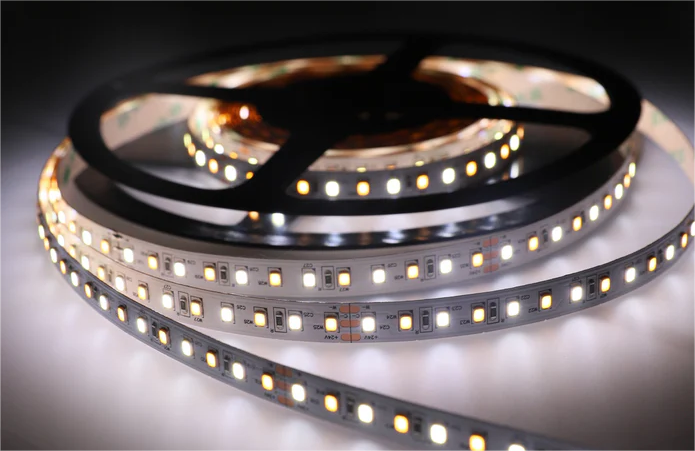
How to identify & control the quality of LED strip?Part.1
Lighting designers all love LED strip because of its flexibility and convenience to use, and LED strip always offers infinite inspiration for linear lighting design. Moreover, the LED strip is one of the simplest products compared to luminaires that generally it consists only of the LED source and flexible PCB, however, the quality control of the LED strip is never the simplest thing and on the contrary, it deserves more attention since it would be troublesome and costly to replace the LED strip once it is broke down especially when the strip is designed and already assembled in a specific fixture or position.
In this article, we will introduce the different dimensions to identify the quality by taking the QC procedure of Yuji Lighting LED strip as the example, after reading this KNOWHOW, we expect to contribute these for you:
-
Understand the risky points of an LED strip;
-
Understand what aspects you should care about in the quality control of LED strip;
-
Understand the quantitative quality control indexes.
-
Understand how to require LED strip manufacturers to follow certain QC procedures.
Four dimensions for the quality identification
Simple as the LED strip, there are also risky points for different quality concerns and should be cared and controlled. We summarize there are mainly four key factors most important to identify the quality of LED strip.
1. LED quality and maintenance
LED quality is the first thing we are concerned about, once one LED dies, it will be obvious to see the uneven lighting distribution and the ugly “breakpoint” (while LED always dies in a string instead of individual, which makes it even worse, see Figure 1). Therefore, we will identify the quality and maintenance of the LED as the first step by evaluating the LM-80 report or the lifespan tested and estimated based on the TM-21.

Figure 1: When one LED dies, the whole string will disconnected.
Source from: https://www.youtube.com/watch?app=desktop&v=bi19aIWfHjM
2. Adhesive force
LED strip is always coupled with adhesive tape (3M tape mostly), even if the strip is very light (about 25g per meter generally), after long time of working with a certain temperature fluctuation by on/off of the LEDs, the adhesive tape changes along with time, thus there is the possibility separation between the adhesive tape and the flexible strip or between the adhesive tape and the mounting surface. Figure 2 is an example of such a phenomenon.

Figure 2: An LED strip is out of the adhesive tape after a long time of use.
Source from: https://www.unitopledstrip.com/how-to-stop-my-led-strip-lights-falling-down/
3. Physical stress force
The physical stress is important due to the following reasons even if the strip will be rarely moved once it is mounted in the fixture:
• During the production, the flexible PCB will be repeatedly rolled and unrolled for the SMT procedure and test;
• During the packaging and final test before shipment, the finished LED strip will be repeatedly rolled and unrolled;
• When customers receive the strips and do the incoming inspections, the LED strip will be rolled and unrolled;
• Generally, the whole reel of the strip is not mounted entirely just for one time, hence the LED strip will be repeatedly cut, rolled and unrolled again and again…
We have calculated that the LED strip can be rolled and unrolled 20-30 times during the production, test and repeated installation and use, and only the last time of unrolled status decides the practical quality, hence the physical stress force is a key factor of the strip quality identification. When there is a quality risk, a phenomenon like Figure 3 may happen.

Figure 3: The cracked LED strip.
Source from: https://www.reddit.com/r/led/comments/4y11rp/how_to_fix_broken_led_strip/
4. Temperature
Temperature affects LED efficacy and lifetime very much and it is even important for the surface you mount the LED strip on. The temperature is related to different aspects like ambient temperature, the temperature of the LED surface, and the temperature transferred to the PCB surface. Controlling the temperature is very important for the lifetime of the products, and is also important for the environment, LED strip can burn due to poor quality materials or inappropriate control (Figure 4).

Source from: https://www.litewave.co.uk/many-led-strips-pose-a-fire-risk-768432.html

Leave a comment